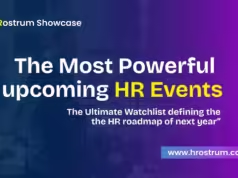📰 FEATURED INSIGHT | HROSTRUM.COM
For decades, performance reviews have followed a familiar, rigid cycle—annual appraisals, goal check-ins, and feedback forms. But as the modern workplace evolves, so too must the systems we use to measure and improve performance. Enter AI-powered continuous feedback systems—the next frontier in talent development and organizational agility
Traditional performance reviews often suffer from:
- Infrequent feedback: Annual or bi-annual evaluations fail to address real-time performance or provide timely corrective guidance.
- Bias and subjectivity: Human memory is fallible, and recency or halo effects can skew fair assessment.
- Employee disengagement: Static reviews rarely lead to developmental growth or motivation for employees.
In a fast-paced, digitally-driven world, organizations need tools that match the speed and complexity of human performance. This is where Artificial Intelligence (AI) steps in
What Are AI-Powered Continuous Feedback Systems?
These are platforms that integrate AI and machine learning algorithms to collect, analyze, and deliver feedback on an ongoing basis. Unlike static reviews, AI-enabled systems tap into various data sources—emails, project management tools, peer reviews, CRM logs, and more—to offer holistic, real-time insights into an employee’s contributions.
Key features include:
- Automated sentiment analysis of communication and feedback.
- Behavioral analytics that detect performance trends and soft-skill indicators.
- Personalized coaching suggestions generated by AI.
- Goal tracking and nudges aligned with OKRs or KPIs.
Benefits for HR and Organizations
- Real-Time Insights: Managers and employees get timely data to act on performance gaps or celebrate wins, enhancing agility.
- Reduced Bias: Algorithms trained to detect and correct for biases can promote more equitable evaluations.
- Enhanced Engagement: Continuous feedback fosters a culture of growth, recognition, and open communication.
- Better Talent Decisions: Predictive analytics help in identifying high-potential talent, attrition risks, and training needs
Challenges and Considerations
While promising, AI-based performance systems are not without pitfalls:
- Privacy concerns: Over-monitoring may raise ethical questions; transparency in data usage is essential.
- Algorithmic bias: AI systems must be trained on diverse, unbiased data to prevent systemic discrimination.
- Human touch: Emotional intelligence and empathy in feedback cannot be fully replicated by machines—blending AI with human judgment remains critical.
What HR Leaders Should Do Now
- Pilot AI tools in feedback processes, starting with smaller teams.
- Train managers to interpret AI-generated insights and pair them with personal coaching.
- Create transparent policies around data collection and feedback ethics.
- Invest in employee education to build trust in AI-enhanced systems.
Conclusion
The future of performance management lies in continuous, intelligent, and inclusive systems—where AI acts not as a replacement but as a co-pilot for managers and HR leaders. By embracing AI-powered feedback loops, organizations can not only enhance productivity but also create more engaged, empowered, and future-ready workforces.
The performance review isn’t dying—it’s evolving. And with AI, it’s evolving for the better.
Contribute to HRostrumHR
Would you like to share your insights on HR trends, corporate strategies, or the future of work? We invite HR professionals, business leaders, and industry experts to contribute to HROstrum!

Follow us on LinkedIn
Access similar article here










